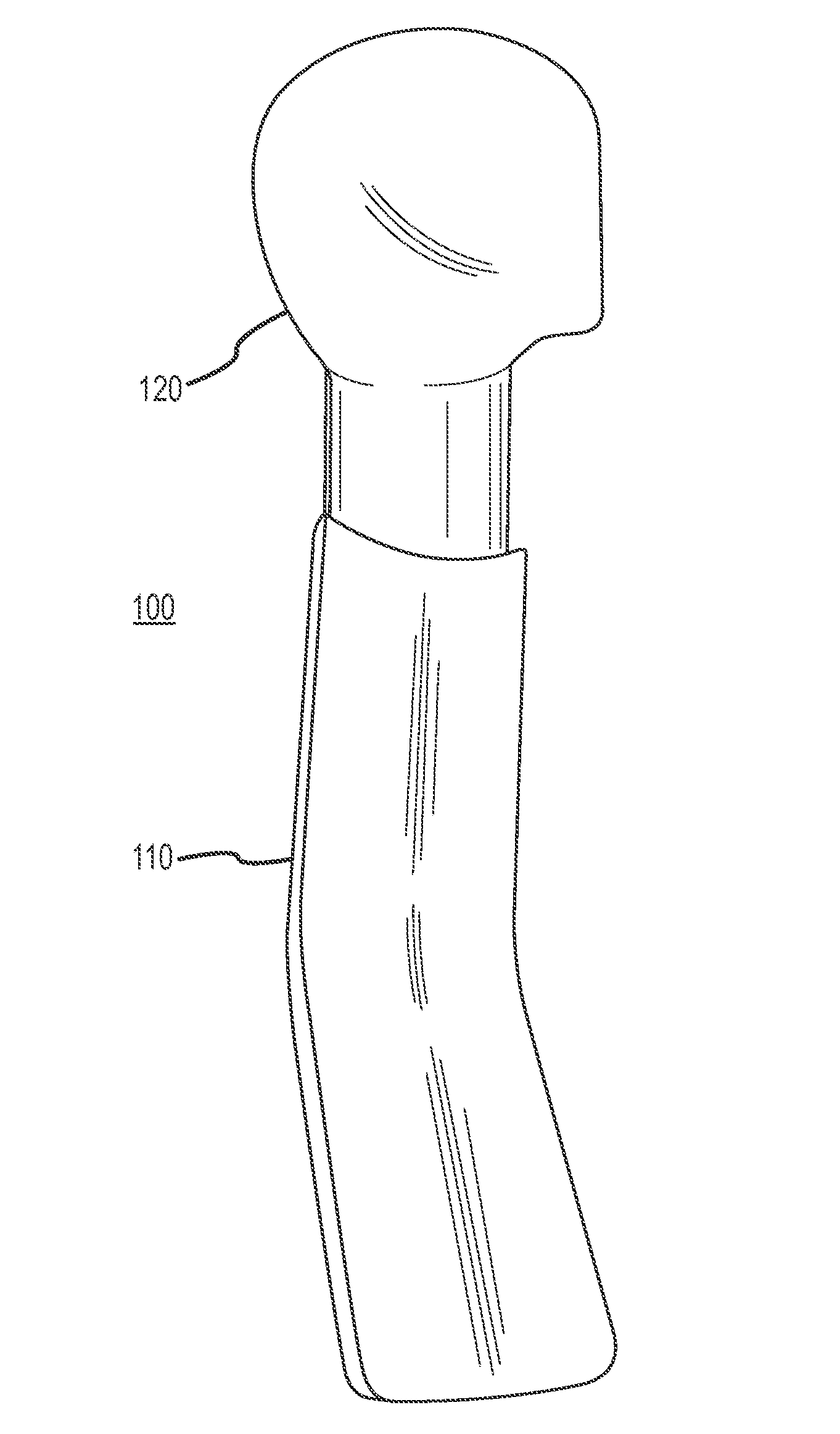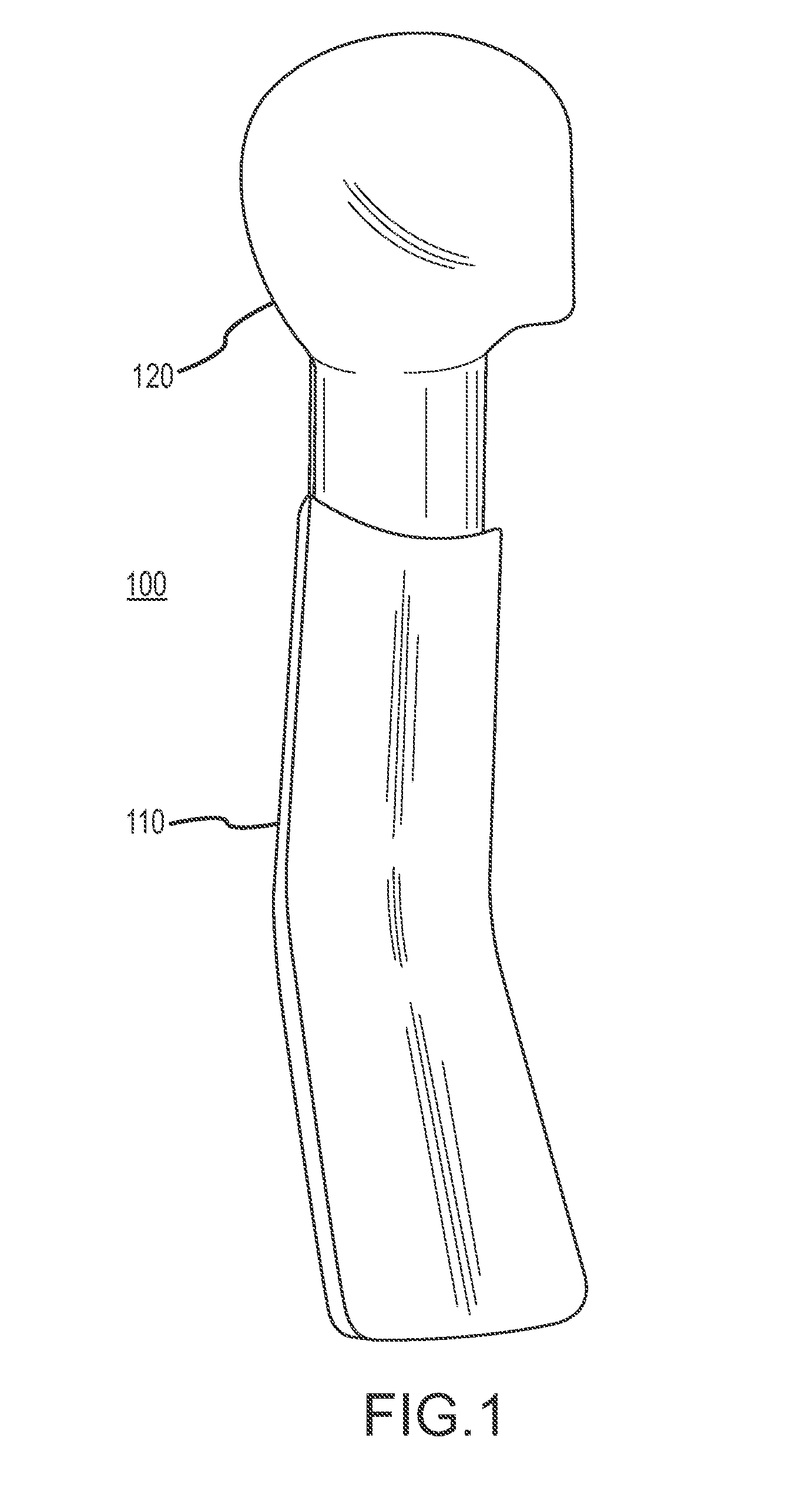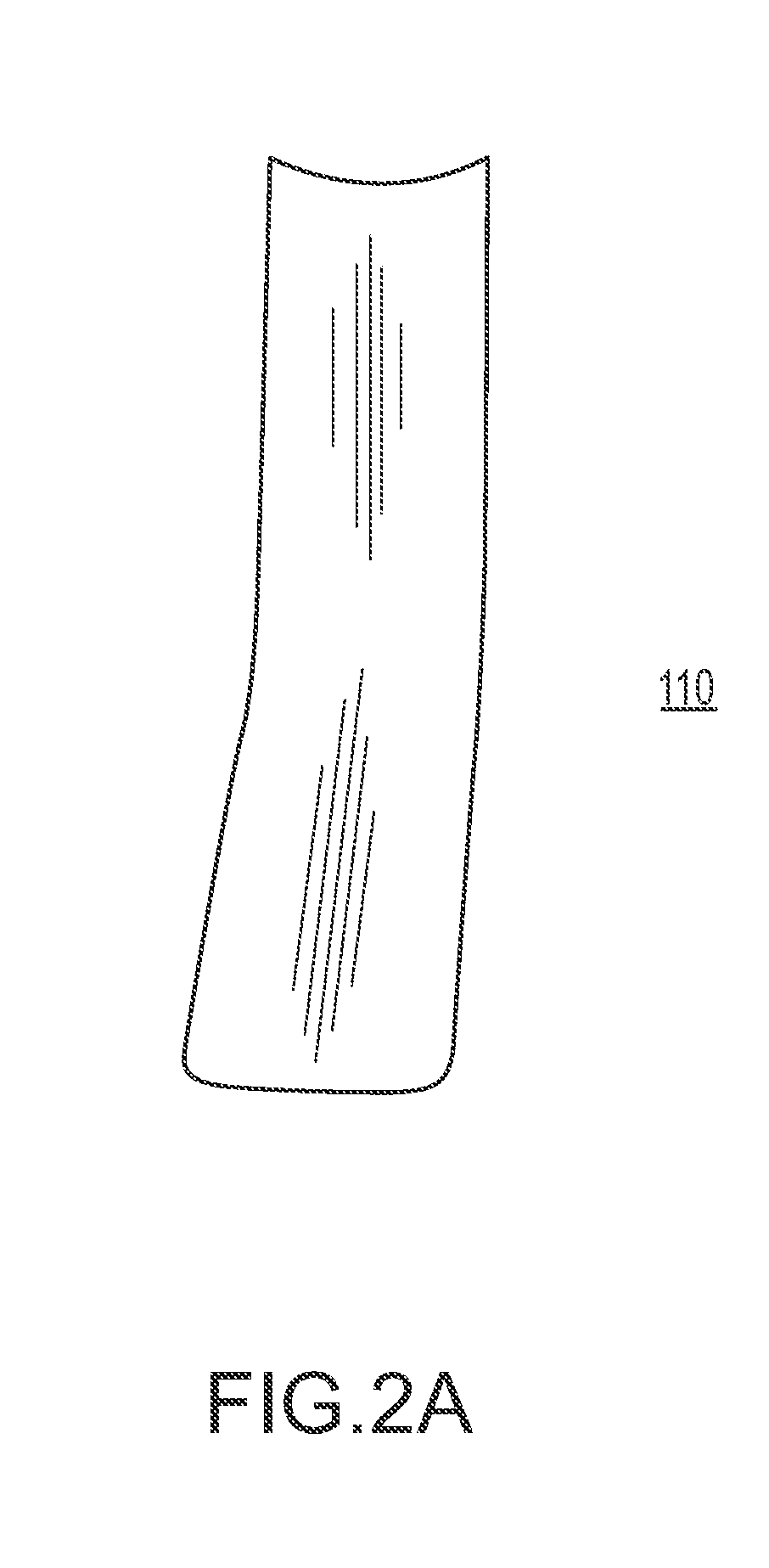Arm board device
a technology for arm and hand, which is applied in the field of arm board devices, can solve the problems of reducing the use of medical devices, increasing medical complications, injury, death, etc., and reducing the incidence of deep vein thrombosis, reducing the incidence of patient injury, and reducing the incidence of patient dv
- Summary
- Abstract
- Description
- Claims
- Application Information
AI Technical Summary
Benefits of technology
Problems solved by technology
Method used
Image
Examples
Embodiment Construction
[0022]Persons skilled in the art will readily appreciate that various aspects of the present disclosure may be realized by any number of methods and apparatuses configured to perform the intended functions. Stated differently, other methods and apparatuses may be incorporated herein to perform the intended functions. It should also be noted that the accompanying drawing figures referred to herein are not all drawn to scale, but may be exaggerated to illustrate various aspects of the present disclosure, and in that regard, the drawing figures should not be construed as limiting. Finally, although the present disclosure may be described in connection with various principles and beliefs, the present disclosure should not be bound by theory.
[0023]“Proximal” as used herein means a portion of a device that, in use, is located closer to the patient's heart. “Distal” as used herein means a portion of a device that, in use, is located further from the patient's heart. According to one aspect...
PUM
 Login to View More
Login to View More Abstract
Description
Claims
Application Information
 Login to View More
Login to View More - R&D
- Intellectual Property
- Life Sciences
- Materials
- Tech Scout
- Unparalleled Data Quality
- Higher Quality Content
- 60% Fewer Hallucinations
Browse by: Latest US Patents, China's latest patents, Technical Efficacy Thesaurus, Application Domain, Technology Topic, Popular Technical Reports.
© 2025 PatSnap. All rights reserved.Legal|Privacy policy|Modern Slavery Act Transparency Statement|Sitemap|About US| Contact US: help@patsnap.com



